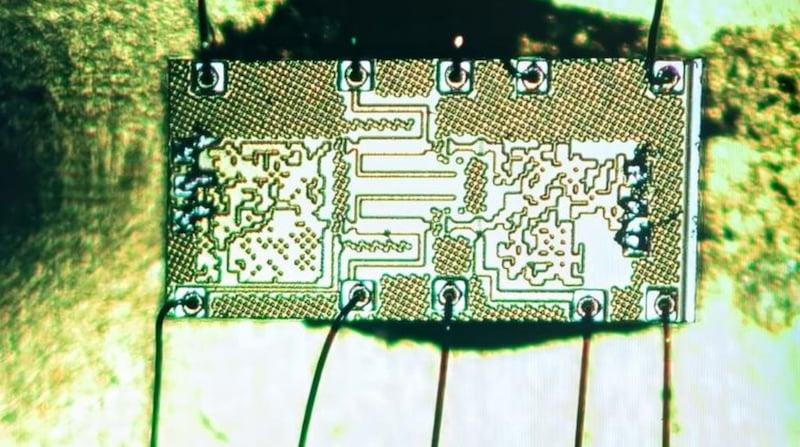Princeton Leverages AI to Take On the Legwork of Wireless Chip Design
Princeton University researchers have developed a new AI-based approach to slash the time and cost of designing wireless chips.

Professor Kaushik Sengupta, left, and first author Emir Ali Karahan, a graduate student in electrical and computer engineering.
By combining deep learning with electromagnetic (EM) design, the researchers believe they’ve set a new standard for creating high-performance chips.
Wireless Chip Design Challenges
Wireless chip design is notoriously complex. Radio-frequency (RF) and millimeter-wave integrated circuits are used in high-frequency applications, such as 5G networks and sub-terahertz systems, where even minor design flaws can significantly impact performance. The process involves integrating active circuits—such as amplifiers and mixers—with passive EM structures like antennas and filters. These components must be designed and optimized together.
Traditional methods rely on pre-set templates, parameter sweeps, and iterative fine-tuning to meet performance goals. This approach is both time-consuming and computationally expensive, often requiring weeks of work and significant engineering expertise. Worse, it limits the exploration of unconventional designs that could offer better performance.
The Princeton research team set out to transform this process by leveraging AI to handle much of the heavy lifting.
How AI Is Redesigning the Design Process
The core of Princeton’s breakthrough is a deep learning-based EM emulator. This model, built on convolutional neural networks (CNNs), predicts the scattering and radiative properties of arbitrary-shaped EM structures, eliminating the need for traditional EM simulations.

An enlarged image of the chip’s circuitry shows unusual patterns.
Instead of relying on templates, the AI synthesized designs from scratch using an optimization algorithm. Here’s how it works:
Image-based modeling: The CNN is trained to analyze the geometry of a given EM structure and predict how it interacts with electromagnetic waves. This capability speeds up analysis and allows for near-instant feedback on design choices.
Inverse synthesis: With the EM emulator in place, the AI can reverse-engineer designs based on specific performance targets. Starting from a random structure, optimization algorithms like genetic algorithms refine the shape and configuration to meet desired goals.
Co-designing active and passive elements: The AI doesn’t stop at passive structures. It incorporates the properties of active components, such as amplifiers, into the design process. This integrated approach ensures that the final design works seamlessly as a whole, optimizing performance across the entire chip.
The Princeton team claims its AI model can design components like antennas, power dividers, and filters in minutes—a process that used to take weeks. In addition, the system can generate designs that outperform the best results in its training data.
Not a Replacement for Human Design
Despite its power, AI doesn’t replace human designers. Instead, it complements their expertise. Engineers still define objectives, interpret results, and refine final designs. The AI handles the tedious and time-intensive tasks, freeing up engineers to focus on higher-level decision-making.
This collaborative model allows for an iterative workflow, where engineers can tweak AI-generated designs to suit specific requirements. By automating routine processes, the AI enhances creativity and exploration, enabling engineers to push the boundaries of what’s possible in chip design.
Faster, Smarter, and Still Collaborative
The team demonstrated their approach by designing, fabricating, and testing a variety of EM structures and circuits. These included a broadband millimeter-wave amplifier, which incorporated asymmetrical three-port structures optimized by the AI. The designs were fabricated using industry-standard processes and reportedly showed strong real-world performance.
Princeton’s research could represent a major leap forward for the future of wireless chip design. By addressing the inefficiencies of traditional methods, Princeton’s AI-powered method offers a fast, flexible alternative. It opens the door to more innovative, compact, and high-performing designs, paving the way for advancements in wireless networks, sensing applications, and beyond.
Sign up to our newsletter
Receive our latest updates about our products & promotions
